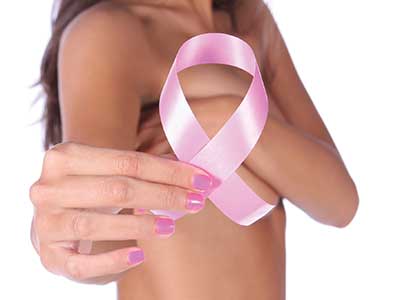Changing the Game in the Fight Against Breast Cancer

Breast cancer stands as a significant global health challenge, being the most frequently diagnosed cancer and a leading cause of cancer-related mortality among women. Although it is uncommon, men can also develop breast cancer. In 2022, approximately 2.3 million new breast cancer cases were reported worldwide, with around 670,000 deaths attributed to the disease. While incidence rates tend to be higher in developed nations, low- and middle-income countries bear a disproportionate burden of fatalities due to various contributing factors.
In Nigeria alone, 2020 saw 28,380 new breast cancer diagnoses, representing 22.7% of all newly identified cancers. The country’s age-standardized mortality rate for breast cancer ranks among the highest globally and is the highest across Africa, according to the World Health Organization. Alarmingly, over 70% of Nigerian women are diagnosed at advanced stages (III and IV), with elevated death rates linked to limited awareness, delayed diagnosis, poor health-seeking behaviors, and restricted access to timely, effective treatment options.
Breast cancer originates when genetic alterations occur in breast cells, prompting uncontrolled growth and division. These abnormal cells may cluster to form a lump or mass called a tumor, which can be benign (non-cancerous) or malignant (cancerous).
Breast cancer is classified into two main types: “in situ,” where cancer cells remain confined within the ducts or lobules, and “invasive,” where cancer spreads beyond these structures into surrounding breast tissue. Invasive cancers can metastasize through the lymphatic system or bloodstream to distant organs. The most prevalent forms include invasive ductal carcinoma, which begins in the milk ducts, and invasive lobular carcinoma, originating in the lobules.
Although the precise causes of most breast cancers remain unclear, several risk factors are known to elevate a woman’s likelihood of developing the disease. Age is a significant factor, with most cases occurring post-puberty and especially after 55 years. A family history of breast cancer-particularly in a mother, sister, or daughter diagnosed at a young age-along with inherited gene mutations such as BRCA1 and BRCA2, increase risk. Hormonal factors like early menstruation, late menopause, and nulliparity (never having children) raise estrogen exposure, further heightening risk. Lifestyle factors including obesity, alcohol intake, and smoking also contribute to increased susceptibility.
Moreover, prolonged hormone replacement therapy (HRT) after menopause has been linked to a greater risk of breast cancer. Exposure to radiation in the chest area, especially during youth, is another risk enhancer. Women with dense breast tissue may face challenges in tumor detection via mammography, and breast density itself may be a risk factor.
It is crucial to understand that many women diagnosed with breast cancer have no identifiable risk factors, while others with multiple risks may never develop the disease. This suggests that breast cancer likely arises from a complex interplay of genetic predispositions and environmental influences.
The hallmark symptom of breast cancer is typically a lump or thickened area in the breast or underarm, which may feel firm, rubbery, or soft. Changes in breast size or shape-such as one breast becoming noticeably larger or altered in contour-can also signal the disease. Skin alterations, including dimpling resembling an orange peel, redness, puckering, or scaling, may be present.
Additional warning signs include nipple inversion (turning inward), unusual nipple discharge (especially if bloody), or changes in nipple appearance like redness or rash. Open sores on the nipple or breast skin can also indicate cancer. While breast pain alone is rarely a cancer symptom, persistent localized pain in the breast or armpit warrants medical evaluation. Inflammatory breast cancer, a rare but aggressive form, may cause sudden redness, discoloration, or rash covering a large breast area.
Because early breast cancer often lacks symptoms, regular screening and self-examinations are vital. Although most breast lumps are benign, any suspicious changes should prompt prompt consultation with a healthcare professional. Early detection significantly improves treatment outcomes and survival rates.
Preventing breast cancer largely involves adopting healthy lifestyle habits and, in some cases, medical interventions to lower risk. Maintaining a healthy body weight, especially after menopause, is essential since obesity is linked to higher breast cancer risk. Engaging in regular physical activity-such as a brisk 30-minute walk daily-can substantially reduce risk compared to inactivity. Limiting alcohol consumption and avoiding tobacco use are also important preventive measures.
Breastfeeding for at least six months has been shown to offer protective benefits. A balanced diet rich in fruits, vegetables, and whole grains, while limiting red meat and sugary beverages, is recommended to support overall health and potentially reduce cancer risk.
From a medical standpoint, certain medications may be prescribed to high-risk individuals to decrease breast cancer risk, although these options remain underutilized. The decision to use hormone replacement therapy for menopausal symptoms should carefully weigh potential benefits against increased cancer risk.
For women with a strong family history of breast or ovarian cancer, genetic testing for mutations like BRCA1 and BRCA2 can provide valuable risk assessment and guide preventive strategies. In some high-risk cases, prophylactic surgeries such as mastectomy or oophorectomy may be considered. While mammography is not a preventive measure, it plays a critical role in early detection, which greatly enhances survival chances. Minimizing unnecessary exposure to radiation from diagnostic imaging, such as CT scans, is also advisable.
As Breast Cancer Awareness Month unfolds this October, it is imperative that we all engage with this pressing health issue. This means encouraging timely mammograms, understanding personal and family medical histories, and overcoming fears surrounding diagnosis. Although not all outcomes can be controlled, arming ourselves with knowledge is key to reducing risk, facilitating early detection, and improving the quality of life for those affected by breast cancer.
Ojenagbon, a specialist in health communication and certified management consultant, resides in Lagos.








Leave a Reply